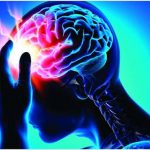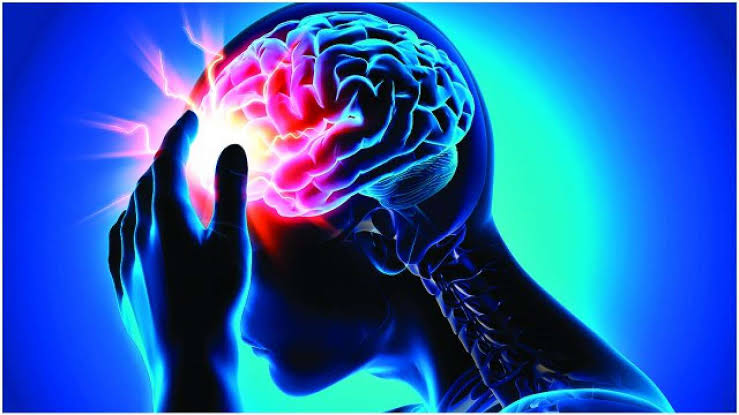Stroke: Symptoms, Causes, Risk factors, Diagnosis, Treatment and Prevention
If you are talking to someone, and you SUDDENLY see they
Cannot talk clearly or talk at all,
Cannot smile/move one side of the face,
Cannot lift an arm/leg very well,
Cannot close one side of the mouth,
This is NOT a spiritual arrow,
That is STROKE.
Go to hospital NOW.
So lets use this opportunity to educate one another on Stroke.

So what’s a Stroke?
A stroke is a serious life-threatening medical emergency that happens when the blood supply to a part of the brain is cut off.
A stroke is a medical emergency and urgent treatment is very key.
Something fast has to be done about Stroke to avoid severe permanent damage to the brain.
The faster a person gets to hospital and receives treatment, the lesser the damage that is done. Stroke is serious.
Because wasting time can mean:
1. Being paralysed for life.
2. DEATH.
So how do you know if a person is having a stroke?
The main symptoms of stroke can be remembered with the short code F.A.S.T.
It stands for the signs you see.
Face – Tell them to smile.
Look at the face. The face may have drooped on 1 side and the person may not be able to smile.
So the first thing is to look at the face and ask them to smile. They usually have a face/mouth dropped to one side.
Arms – Tell them to lift up both arms. The person with a possible stroke may be unable to do so. Ask how the arms feel- it usually feels weak/numb on one side
Speech – Ask them to say a full sentence. The speech may be slurred, make no sense or the person may not be able to talk at all despite appearing to be awake. They may not also understand you.
Time – Get a car/ambulance IMMEDIATELY if you see any of these FAST signs or symptoms.
So what causes Stroke?
The brain is like any other organ in the body. It also needs oxygen & nutrients provided by blood for it to function properly and perform all of its duties.
If blood supply to the brain is restricted or stopped, brain cells start to die.
This is serious.
A cerebrovascular accident (CVA) can lead to serious brain injury, permanent disability, paralysis, loss of speech, reduced quality of life and sudden death.
There are 2 main causes of strokes:
ischaemic stroke – where due to blood clot, brain blood supply stops. It accounts for about 85% of all cases.
haemorrhagic stroke– where a weakened blood vessel in the brain ruptures and the blood supply to that part of the brain stops.
There’s also a condition known as a transient ischaemic attack (TIA), or MiniStroke, where the blood supply to the brain is temporarily interrupted.
What conditions increase your risk of suddenly having a stroke?
high blood pressure,
atrial fibrillation/irregular heartbeat,
diabetes
obesity/being fat
smoking cigarettes,
weed, shisha, cocaine etc,
kidney problems,
excessive alcohol drinking,
sedentary lifestyle/no exercise.
Watch it.
Diagnosis
The first and most important step in assessing a stroke patient is to determine whether the patient is experiencing an ischemic or hemorrhagic stroke so that the correct treatment can begin. A CT scan or MRI of the head is typically the first test performed.
- Computed tomography (CT) of the head
- MRI of the head
- Blood tests especially blood glucose, kidney function tests, cardiac enzymes, toxicology .
- Carotid ultrasound
- Carotid ultrasound/Doppler ultrasound
- Electrocardiogram (ECG, EKG)
- Cerebral angiography
So how is a stroke treated?
Treatment depends on the type of stroke.
Also the part of the brain affected and cause.
Ischemic strokes are usually treated with medication.
This includes medicine to prevent/dissolve blood clots, reduce blood pressure and also cholesterol levels.
If it’s an hemorrhagic stroke, a surgical procedure may be required to remove blood clots.
Surgery may also be used to treat brain swelling, and sort of mop up bleeding in the brain if very massive and also to reduce the risk of further bleeding in cases of haemorrhagic strokes.
So what can you do to reduce your risk of having a stroke?
Live a healthy lifestyle by: eating a healthy junkfree diet- low-fat, high-fibre diet is usually recommended, including plenty of fresh fruit and vegetables.
Never eat too much of foods high in salt and processed foods.
Make sure you limit salt you eat to nothing more than 6grams a day because too much salt will increase your blood pressure (6g of salt is about 1 teaspoonful per day).
That’s ALL the salt you need per day. doing regular exercise- even if it’s brisk walking 30minutes every day.
Some of you have salt bottles on your dining table and make it a habit to always sprinkle extra salt on your food – even when it is NOT necessary. Please be aware that this is very dangerous.
It can put you at risk of high blood pressure, heart attacks, strokes and sudden death.
Regular Exercise: A combination of healthy diet with regular exercise is the best way to maintain a healthy weight. Regular exercise also helps to lower cholesterol levels and keep the blood pressure normal. It’s not all just going to the gym. It’s doing both exercise and diet.
For most people, 30minutes fast walking per day is enough and recommended. Alternatively, a minimum of 150 minutes (2 hours and 30 minutes) of moderate-intensity aerobic activity, such as cycling or fast walking, every week is recommended So it depends on you.
Make your choice.
Stop Smoking.
NOT reduce, STOP.
NO cigarettes, weed or Shisha.
Smoking significantly increases risk of having a stroke.
That’s because it makes blood vessel narrow and makes your blood to clot. Smoking also leads to serious illnesses, such as lung cancer and heart disease.
There are medications and options to help people stop smoking. If you need any of that, speak with your doctor. CUT DOWN on the booze.
Excessive alcohol can cause high blood pressure and irregular heartbeat (atrial fibrillation), both of which can increase risk of having stroke.
It’s also very vital to cut down on alcoholic drinks because they are usually high in calories, which cause weight gain. That’s why many alcoholics tend to be fat and obese.
Also, Heavy alcohol drinking multiplies the risk of having stroke by more than 3 times.
Pls take note.
Recovery from a Stroke:
First thing to state is Stroke can kill. It kills many people.
Pls do not joke with this information.
However many people also survive stroke – but with residual brain injury, speech problems, reduced quality of life and arm/leg paralysis in many cases.
Physiotherapy and occupational therapy will help previous stroke patients get back to performing normal activity of daily living.
Anyway I hope this little article has given you a bit of knowledge on stroke.
Cerebrovascular accident is an emergency.
Know the signs to look out for.
Once you see ANY of those signs – especially in a person (mostly middle aged people), GET THEM TO HOSPITAL ASAP.
Thank you





















